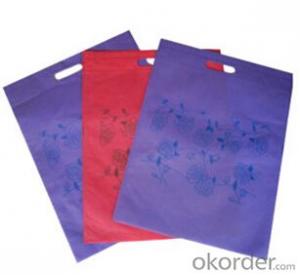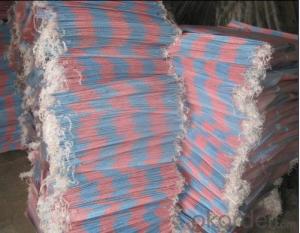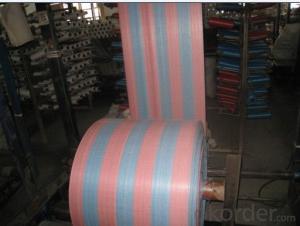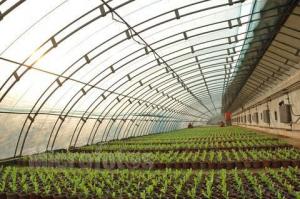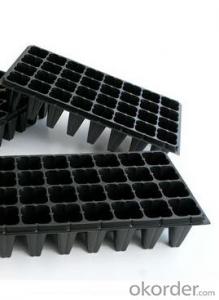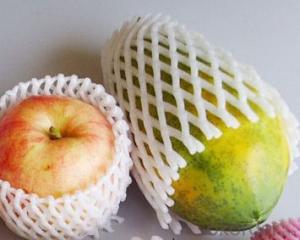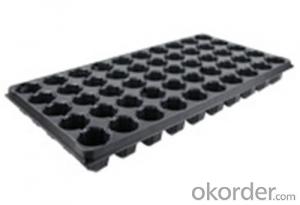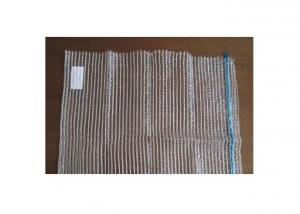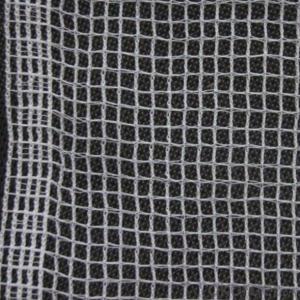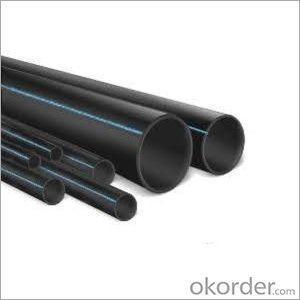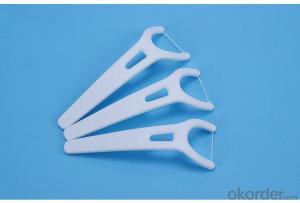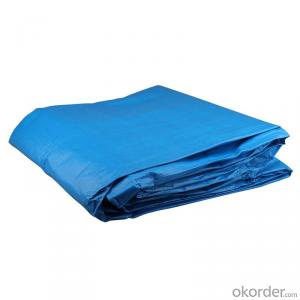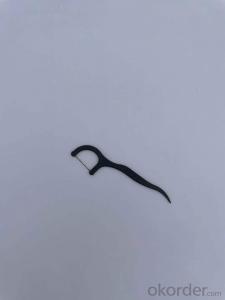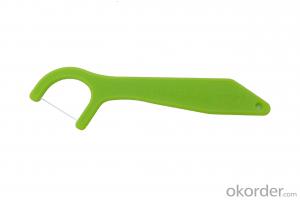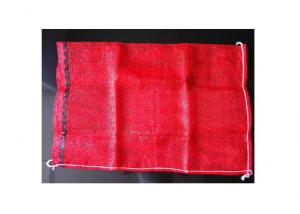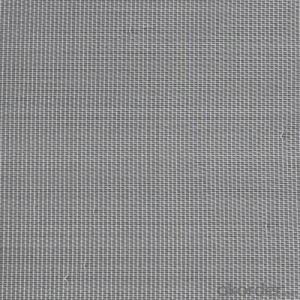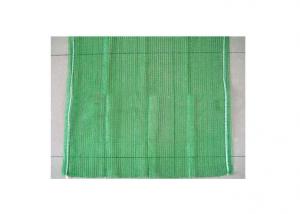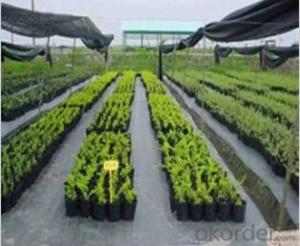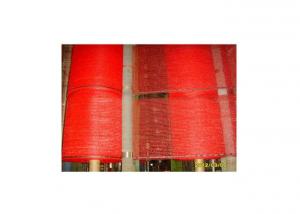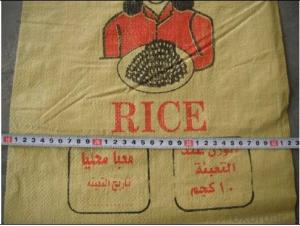Tubular mesh bag shiny red onion packing sacks Turkey 25kg
- Loading Port:
- China Main Port
- Payment Terms:
- TT OR LC
- Min Order Qty:
- -
- Supply Capability:
- -
OKorder Service Pledge
Quality Product, Order Online Tracking, Timely Delivery
OKorder Financial Service
Credit Rating, Credit Services, Credit Purchasing
You Might Also Like
Specifications
onion bags
1.passed SGS and ISO
2.18 years' manufacturer
3. best quality and prices
4.your reliable supplier!
Name:onion bags
Following is the brief introduction of our products and our company.
A.about products
1.Size: we can produce various sizes of leno mesh bags, our regular sizes are
| size (cm) | weight of bag | hold capacity |
| 30*60 | 18gram | 9kg-10kg |
| 30*65 | 20gram | 10kg |
| 40*70 | 27gram | 18-20kg |
| 45*75 | 32gram | 22-23kg |
| 46*83 | 36gram | 25kg |
| 50*80 | 35gram | 28kg |
| 52*83 | 40.5gram | 32kg |
| 52*83 | 37gram | 31kg |
| 52*85 | 42gram | 35kg |
| 52*85 | 38gram | 34kg |
| 52*88 | 40gram | 42kg |
| 52*88 | 42gram | 40kg |
| 52*90 | 44gram | 44kg |
| 55*95 | 50gram | 48kg |
| 60*85 | 42gram | 48kg |
| 60*100 | 48gram | 50kg |
We also accept customerized sizes.
2.Color: as the client's request.for example, red, green, yellow, orange, violet,
milky white etc. We guarantee all the colors are bright and beautiful.
3. Drawstring:tough quality!
4. Hold capacity: from 10kg to 50kg
5. Raw material:
PP tape+PE wire or PP tape+ PP tape.
6.Bottom: fold once, sealed with one or two stitiches.
B. Shipping details.
1. Delivery time: within 21 days upon the reciept of 30% deposit.
2.A 20'' container could load about 12 tons of mesh bags with the size 50*80 cm,
that is about 420,000pcs. A 40'' container could load about 25.5 tons with
the size 50*80 cm, that is about 920,000pcs!
3. Usage:for packing various kindsof vegetable and fruit. Such as potato, cabbage,
onion, carrot, garlic, tomato, eggplant and lemon, orange, apple, pear etc.
4.Environmental friendly, non-toxic component,durable and good appearance.
!
5.Samples fee and time: free, within 3 days!
- Q:How are plastic greenhouse films manufactured?
- Plastic greenhouse films are typically manufactured through a process called extrusion, which involves melting plastic resin and then forcing it through a die to create a continuous film. This film is then cooled, stretched, and wound onto rolls, resulting in a durable and transparent plastic film that can be used to cover greenhouse structures.
- Q:Are there any research institutions studying agricultural plastic products?
- Yes, there are several research institutions studying agricultural plastic products. These institutions focus on various aspects such as the development of sustainable alternatives, the impact of plastic waste on soil and water quality, and the effectiveness of recycling and disposal methods.
- Q:Are agricultural plastic products safe for groundwater?
- Agricultural plastic products, when used and disposed of properly, are generally considered safe for groundwater. However, improper handling, disposal, or excessive use of agricultural plastics can pose a risk to groundwater quality. It is crucial to follow best management practices, such as proper storage, recycling, and disposal methods, to prevent any potential contamination of groundwater resources.
- Q:We have to use a theory for science whether plastic, card or paper makes a better sail. Please give me your opinion. Thanks heaps!
- Plastic
- Q:So I just found out some plastic bags are treated with animal fats or other animal by-products. It sounds like it's typically shopping bags that get this treatment, but in general any kind of plastic might have this.I know there comes a point you just have to suck it up and tolerate certain things, being that it's pretty hard to avoid it in everything. But the thought of gt;eatinglt; from something treated with animal fat is really bothering me and grossing me out. I am concerned about cereal bags and plastic bottles. Does anyone know more of what plastics are treated this way? Maybe it's not in the cereal bags or bottles as much? And say they are, can this by product absorb into the food just by being in it?Thanks!
- Items inside the plastic can be affected by the chemicals used in the processing of the plastic itself. That is why companies do not want you to reuse water bottles, due to the benzene and other chemicals in the plastic itself. When you place a PET bottle in direct sunlight with water inside or in a hot car, the PET slowly degrades or losses the molecular weight of the polymer allowing for harmful chemicals to be introduced into the water or juice inside. In regards to cereal located in a household environment temperature, one should not worry about the chemicals leaching inside the products within the container. Heat, Light and Mechanical stresses allow for chemicals to leach within the food we eat from the containers we use that are plastic. In regards to the animal fat being used when processing plastic, in general slip agents are used when manufacturing in order to increase the timing of the plastic bags being manufactured. Slip agents are generally burnt off and very small amounts are being used .5% 1%, when the product is completed it would be as low as .01% left, when processing most PE the temperatures are above 200 F. So the fat is burned off or has a very low amount left over in the actual bag. It is sanitary or they would not use it. If you are concerned about this, you should also be concerned with the cereal you are eating.
- Q:Can ground cover be used to create a deer-resistant landscape?
- Yes, ground cover can be used to create a deer-resistant landscape. Certain types of ground cover, such as pachysandra, lamb's ear, or creeping thyme, have properties that make them less appealing to deer. These plants often have strong scents, prickly textures, or bitter tastes that deter deer from feeding on them. By incorporating deer-resistant ground cover into the landscape, it can help protect other plants and flowers from deer damage. However, it is important to note that no plant can be completely deer-proof, as deer preferences can vary and they may still occasionally feed on supposedly resistant plants.
- Q:Can nursery trays be used for starting succulent seeds?
- Yes, nursery trays can be used for starting succulent seeds. However, it is important to ensure that the trays have proper drainage holes as succulents are prone to root rot. Additionally, succulents require well-draining soil and indirect sunlight, so it is crucial to provide the appropriate growing conditions for successful seed germination and growth.
- Q:How wide are nursery trays?
- Nursery trays typically come in a variety of sizes, but the most common width for nursery trays is around 10-12 inches.
- Q:plastic!
- Both are effective. Fabric and Plastic do a good job, but i think it is all a personal choice. Personally i use what ever is in the cabinet. When i need one i cannot be too picky for one type or the other. randy
- Q:What are some ground cover options for rocky soil?
- Some ground cover options for rocky soil include creeping thyme, moss, sedum, creeping phlox, and Irish moss. These plants are adaptable to poor soil conditions and can thrive in rocky areas.
1. Manufacturer Overview |
|
|---|---|
| Location | |
| Year Established | |
| Annual Output Value | |
| Main Markets | |
| Company Certifications | |
2. Manufacturer Certificates |
|
|---|---|
| a) Certification Name | |
| Range | |
| Reference | |
| Validity Period | |
3. Manufacturer Capability |
|
|---|---|
| a)Trade Capacity | |
| Nearest Port | |
| Export Percentage | |
| No.of Employees in Trade Department | |
| Language Spoken: | |
| b)Factory Information | |
| Factory Size: | |
| No. of Production Lines | |
| Contract Manufacturing | |
| Product Price Range | |
Send your message to us
Tubular mesh bag shiny red onion packing sacks Turkey 25kg
- Loading Port:
- China Main Port
- Payment Terms:
- TT OR LC
- Min Order Qty:
- -
- Supply Capability:
- -
OKorder Service Pledge
Quality Product, Order Online Tracking, Timely Delivery
OKorder Financial Service
Credit Rating, Credit Services, Credit Purchasing
Similar products
New products
Hot products
Hot Searches
Related keywords


